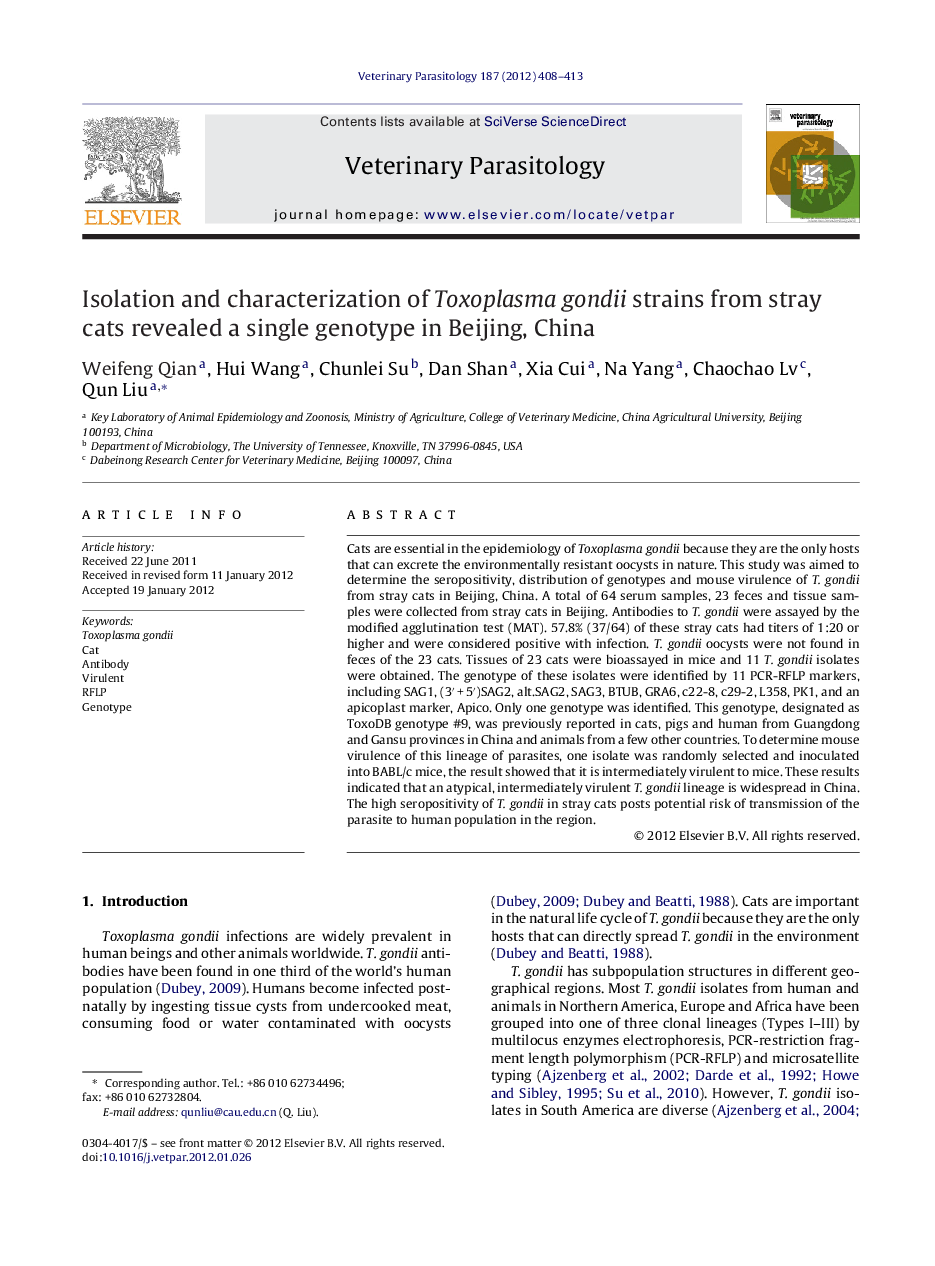| Article ID | Journal | Published Year | Pages | File Type |
|---|---|---|---|---|
| 5804898 | Veterinary Parasitology | 2012 | 6 Pages |
Cats are essential in the epidemiology of Toxoplasma gondii because they are the only hosts that can excrete the environmentally resistant oocysts in nature. This study was aimed to determine the seropositivity, distribution of genotypes and mouse virulence of T. gondii from stray cats in Beijing, China. A total of 64 serum samples, 23 feces and tissue samples were collected from stray cats in Beijing. Antibodies to T. gondii were assayed by the modified agglutination test (MAT). 57.8% (37/64) of these stray cats had titers of 1:20 or higher and were considered positive with infection. T. gondii oocysts were not found in feces of the 23 cats. Tissues of 23 cats were bioassayed in mice and 11 T. gondii isolates were obtained. The genotype of these isolates were identified by 11 PCR-RFLP markers, including SAG1, (3â²Â + 5â²)SAG2, alt.SAG2, SAG3, BTUB, GRA6, c22-8, c29-2, L358, PK1, and an apicoplast marker, Apico. Only one genotype was identified. This genotype, designated as ToxoDB genotype #9, was previously reported in cats, pigs and human from Guangdong and Gansu provinces in China and animals from a few other countries. To determine mouse virulence of this lineage of parasites, one isolate was randomly selected and inoculated into BABL/c mice, the result showed that it is intermediately virulent to mice. These results indicated that an atypical, intermediately virulent T. gondii lineage is widespread in China. The high seropositivity of T. gondii in stray cats posts potential risk of transmission of the parasite to human population in the region.
